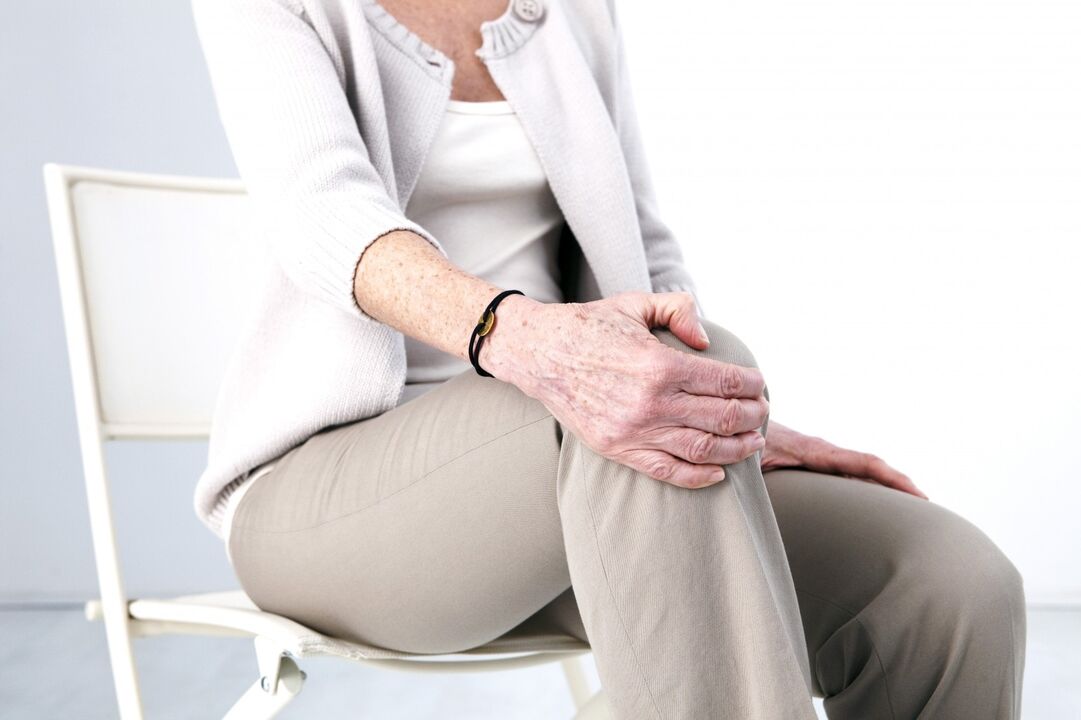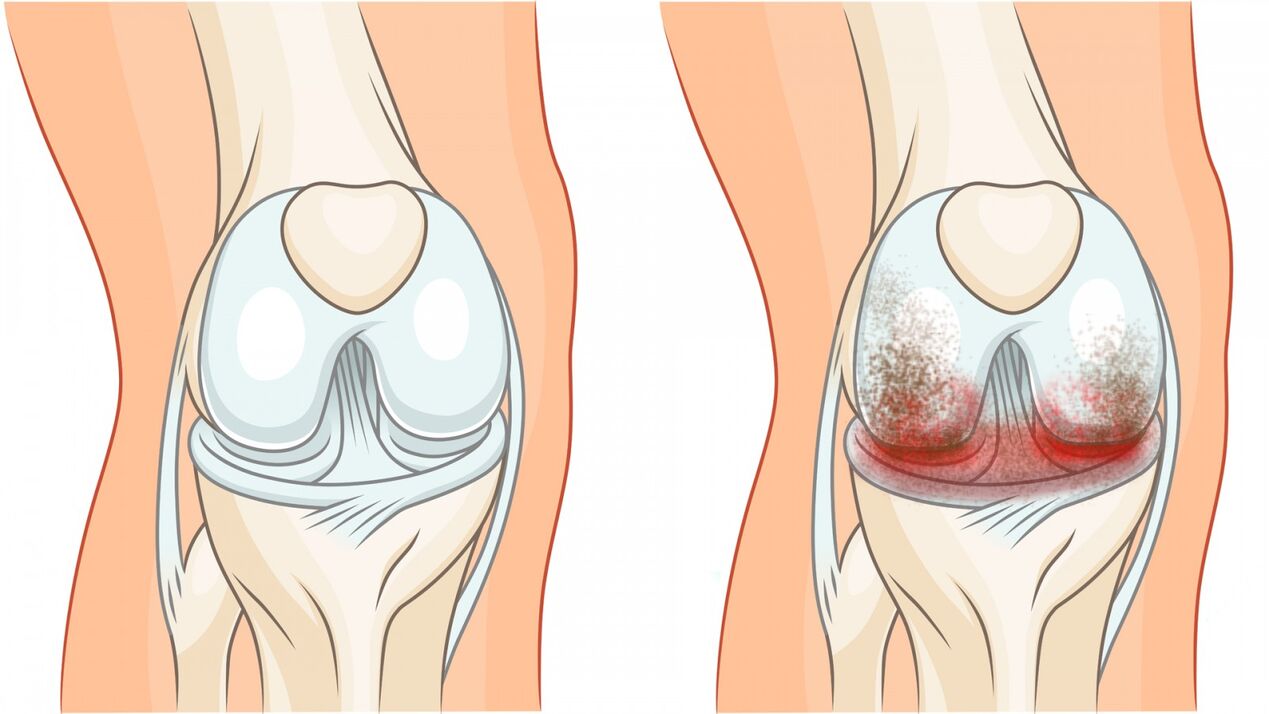Knee pain is a common complaint where they seek medical attention. What causes pain, and how to help yourself if it occurs? There is no definite answer, as the knee joint can suffer from many different types of lesions that arise for many reasons. One of the reasons for this (and very common) is onset arthrosis. Today we will tell you in detail about arthrosis of the knee joint: what are the causes, types, symptoms and signs, we will discuss methods of treatment and prevention.
Types and causes of disease
Arthrosis of the knee joint or gonarthrosis is a primarily non -inflammatory lesion that eventually leads to destruction of the articular cartilage, deformity of the knee and limitation of movement distance in it. The disease has two main forms:
- primary - arises as a result of congenital joint defects;
- secondary - arises as a result of illness or other injury.
The primary form begins to develop at a young or young age and is caused by improper formation of the articular surface or ligament apparatus. During walking, such a joint is exposed to a load disproportionate to its capacity, which provokes degenerative changes in it.
The development of secondary forms of pathology can cause:
- Injuries: leg fractures, bruises and dislocations of the knee, accompanied by damage to the bones and cartilage parts of the joint and its ligament apparatus. In this case, post -traumatic arthrosis of the knee joint develops.
- Surgery to remove the meniscus, as it causes a violation of the integral structure of the knee and its rapid application.
- Unbalanced high loads on the legs are often performed by athletes.
- Excessive obesity also causes arthrosis, as it causes excessive pressure from weight on the articular cartilage of the knee.
- Arthritis is an inflammation of the joints. Long -term arthritis is accompanied by the formation of fluid in the articular cavity and over time can be complicated by arthrosis.
- Metabolic disorders leading to salt deposition in the articular cavity.
- Other factors and diseases accompanied by long -term leg or blood vessel muscle spasms.
- Moved operation.
The pathological process can be one or two -sided. As a result of trauma, unilateral arthrosis (eg, right knee) is most likely to develop, and from obesity - bilateral.

Typical symptoms
Arthrosis of the knee joint develops gradually, sometimes it is preceded by months and years from the initial period, when there are no obvious symptoms (such as severe pain and visible deformity), but from time to time there is discomfort in the knee.
Often, women over the age of 40 who are overweight get sick, and especially, as an exacerbating factor, suffer from varicose veins.
The development of gonarthrosis goes through several stages:
- The early stages can last for months and sometimes years. One worries about periodic knee pain, especially when taking the first step after waking up in the morning, and also when going up and down stairs.
- In the second stage, the pain becomes stronger and occurs with movements accompanied by special features. Fluid accumulation may occur in the articular cavity, and during examination, you can see the initial deformation. The range of motion in a sore knee begins to decrease.
- The third stage is characterized by pain that does not go away even at rest. The discomfort often worsens before the weather changes. During this time, the joints largely lose function: the foot may be barely bent at the knee or not bent to the end. The way of walking changes: into "pedaling" or on bent legs. Knee deformities are very noticeable: the legs are bent and O or X -shaped.
The symptoms of post-traumatic arthrosis of the knee joint develop more rapidly. Against the background of the injury, pain appeared in the knee area and was swollen. Such pain always accompanies a person and increases after physical exercise. Gradually, a feeling of tightness and stiffness in the knees accompanied it. Sometimes, with this form of the disease, only a few months pass from the initial signs to irreversible changes.

Treatment of gonarthrosis
The scope of treatment depends on the stage of the disease and the severity of the lesion. But because the disease is chronic, the only thing that can be achieved is long-term remission (resting phase when pathological manifestations are minimal or absent). At the same time, if at an early stage it is possible to eliminate the cause of arthrosis of the knee joint (for example, to lose weight), then almost complete recovery is possible.
Goals of gonarthrosis treatment:
- relieve pain,
- if possible, restore damaged cartilage and ligaments,
- increase the range of motion in the joints.
Treatment method:
- drug therapy,
- massage and manual therapy,
- surgical intervention,
- rehabilitation therapy (exercise therapy, physiotherapy and other methods).
Only a doctor can choose the right medicine - can not prescribe it yourself. Their main actions aim to:
- Elimination of symptoms of arthrosis of the knee joint: relief of pain and inflammation. For this, appropriate medications are prescribed, including hormones, that are injected into the articular cavity.
- Increases blood supply to the affected area. It is prepared in a way that relieves vascular spasms and relaxes muscles.
- Cartilage recovery. For this, medications are prescribed to nourish and restore cartilage.
The effects and massages manually reduce pain, relax spasmodic muscles near the affected knee, help increase range of motion, correct bone position, and improve blood circulation.
With distant and irreversible wounds, knee arthrosis is treated by a radical method - prosthetics, that is, implantation of a metal prosthesis to replace a crushed joint. So far, this is the only way that provides a chance for full recovery, however, endoprostheses have a limited lifespan, after which they must be replaced. Due to the very high cost of such operations, this method of treatment is not yet widespread.
Rehabilitation therapy includes physical therapy, kinesitherapy (training using special weights and simulators), physiotherapy and spa treatments.
Orthopedic methods are intended to relieve knee pain - these are crutches, orthoses, etc. , which facilitate walking (used if necessary).
There are many folk recipes for various ointments and compresses based on herbal ingredients, medicinal bile, and warming bandages made from natural wool are used. Basically, the action of the method is aimed at relieving pain and eliminating the main symptoms.
Preventive measures
Prevention of knee arthrosis includes many factors:
- Balanced diet: the diet should have adequate amounts of protein, vitamins and minerals.
- Fight the wrong way of life and get rid of bad habits.
- Weight normalization.
- Adequate physical activity.
- Injury prevention when playing sports, lifting weights.
The most important thing in identifying a pathology such as knee arthrosis is not to initiate the disease, as its distant stage causes deformity. But if all efforts are directed in a timely manner for treatment and prevention - until the time is gone and the symptoms are insignificant - there is a chance for a complete cure of the disease.


























